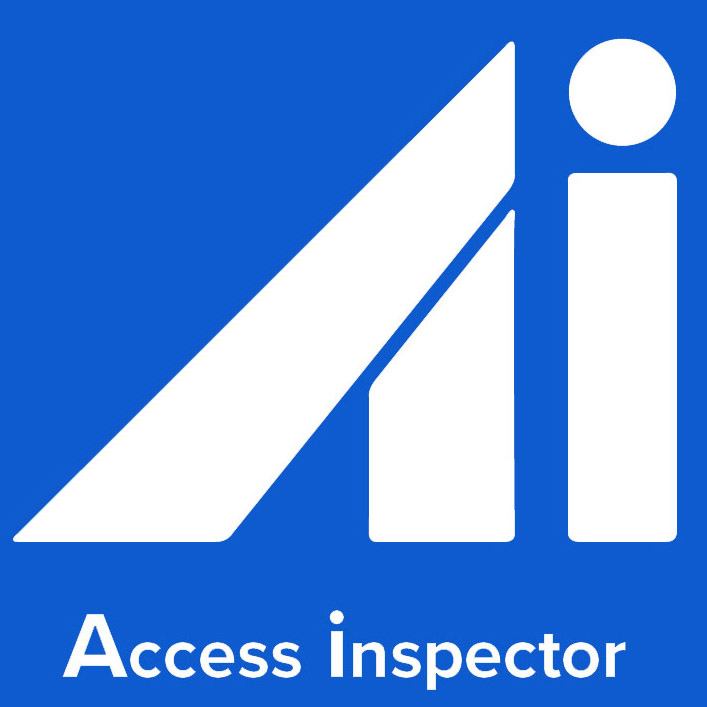Access Inspector

Access Inspector is the world’s first friendly built environment assessment tool usable by a wide range of users.
Access Inspector is comprised of checklists for assessing more than 40 common architectural elements that contribute to create universally designed and accessible environments, such as: access routes, kerb ramps, entrances, doors, corridors, ramps, toilets, elevators, signage, etc.
Download App
The price is per month for USD $4.99 or its equivalent in your local currency.
Download our apps available on Apple and Android Devices.
Access Inspector is based on a benchmark study of common accessibility and universal design specifications for creating a built environment accessible to everybody. Access Inspector checklists include specifications that benefit persons with different types of disabilities, as well as other beneficiaries of a universally design environment, such as: pregnant women, children and elders.
Access inspectors can be used to assess accessibility of elements that are present in different type of buildings, for example: office buildings, shopping malls, hotels, religious facilities, educational facilities, meeting and lecture rooms, et
Access Inspector has been designed to primarily assess buildings and facilities. However, some of its checklist may also be used to assess the public realm, such as the checklists for ramps, kerb cuts, accessible routes, among others.
Current standards or accessibility guideline from the International Standards Organization (ISO), North America, Europe and Asia have been studied to provide a short but comprehensive list of elements with dimensions and specifications that create an accessible environment for many users.
Access Inspector will be a useful tool that complements local accessibility requirements in regions where regulations exist and will be an invaluable assessment tool in regions or cities lacking any accessibility requirements or accessibility consultants.
The app Initial functionalities allow adding photos to the assessments checklist and creating simple reports than can be exported by email, or printed directly from the app, using a compatible print device.
Please note that Access Inspector does not replace any local legally binding accessibility legislation, nor replaces a thorough accessibility assessment by a specialized consultant.
How to use Access Inspector
- You need to have basic understanding of how to measure architectural elements and dimensions using a regular tape measure.
- For how to determine a slope’s gradient or illumination levels, you can use third-party apps already available in the App Store or Google Play, there are some free and paid options available in both platforms.
- Access Inspector include 49 checklists, however, depending on the facility you want to assess, you may use all of them or only a handful. It’s up to you.
- You can create several “Projects” inside the app that can include from 1 or the 49 assessment checklists.
Keep in mind:
Access Inspector includes the minimum requirements for a universally designed environment, from the outside to the inside, in any given facility and creates a printable report for you.
Nevertheless, Access Inspector will not automatically determine if the assessed facility is a 100% accessible or not, as there are many factors involved in providing an accessibility ranking for any given facility.
These factors may include the facility’s purpose, target users, local legal requirements or compliance with local construction or accessibility requirements. Access Inspector will only provide you with the data for you to determine if any given element is accessible or not.
Access Inspector scope
Minimum dimensions
The app uses the minimum permissible dimensions for many elements, to cover a broad range of codes and jurisdictions. In some cases, local codes may feature more favourable dimensions, in which cases those local requirements shall be obviously preferred.
Accessible routes
Accessible routes specifications may vary, but there are certain criteria that makes them accessible to everybody under any circumstances. Please check that in your assessment, the routes comply with the minimum specifications included in the app
Accessible routes may be exterior or interior, they can have the same elements. The app can be used to evaluate both.
Accessible entrances
Specifications vary for entrances clear widths, according to traffic, use, type of buildings, etc. We have used the minimum possible width to allow a wheelchair user: 900mm
ISA – International Symbol of Access
The ISA is an abstract representation of a human figure in a wheelchair, of white colour on blue background
Parking
Provision of parking places may vary in each country or city. For the purpose of this assessment tool, we didn’t set any minimum number of accessible parking spaces, we kindly suggest checking the local regulation instead for determining if the element comply with local requirements.
Toilets
Access Inspector includes the following checklist for toilets:
- Toilet Overview – general specifications for accessible toilets in any facilities that needs to be checked first. As there could be many types of accessible toilet arrangement, the following checklist address the most common layouts.
- Accessible toilets: Accessible toilets in the men and women clusters.
- Unisex toilets: Single unit toilets for either men or women use, outside of the men and women clusters.
- Type A toilets: Layout with transfer space in both sides of the WC
- Type B toilets: Layout with transfer space in one side only of the WC
- Family toilets: A bigger toilet with specific elements to serve the needs of persons with disabilities helped by a family member or assistant, with more elements than a unisex toilet.





